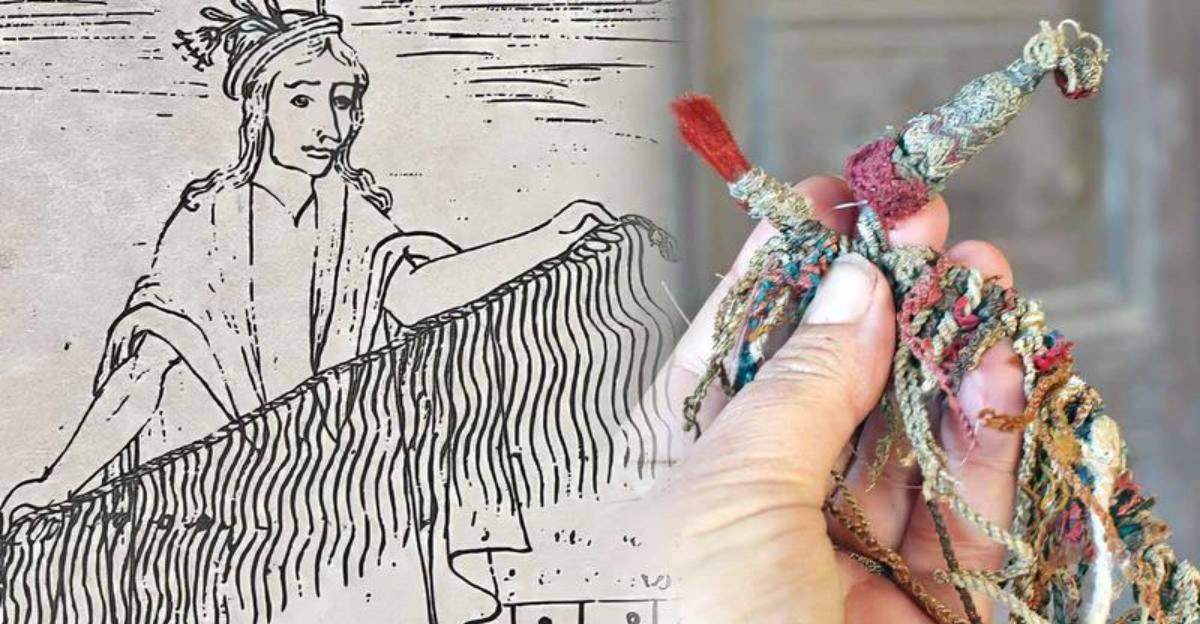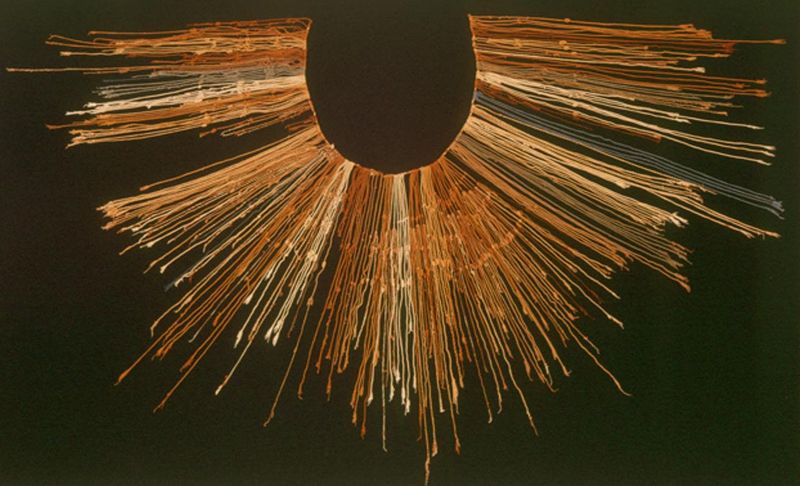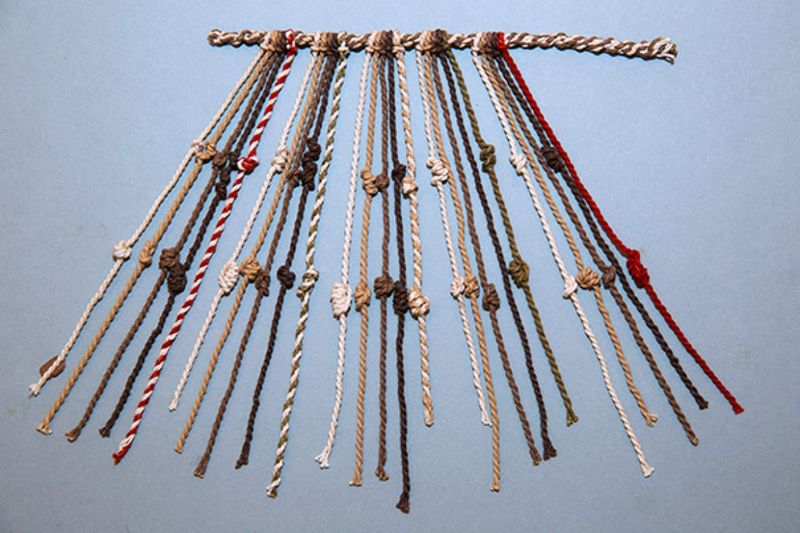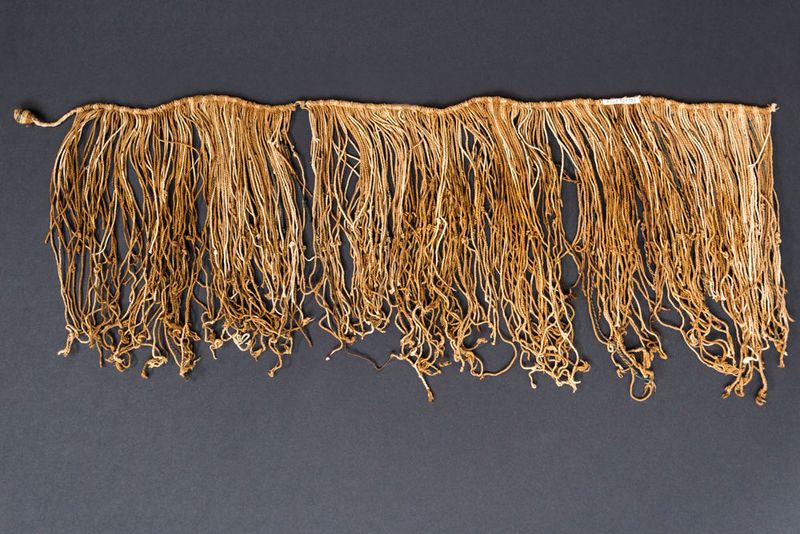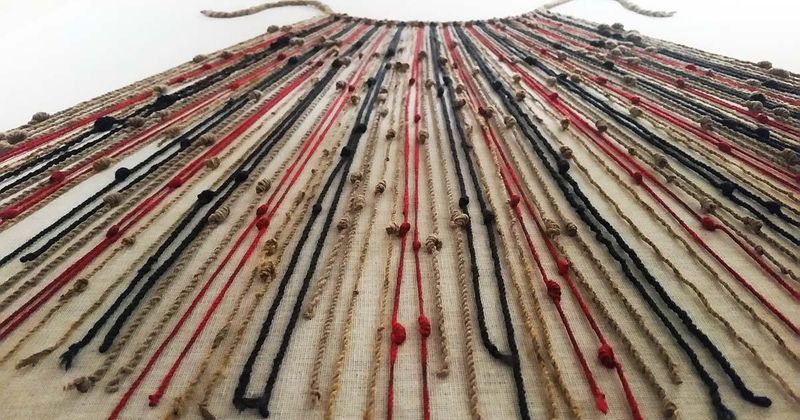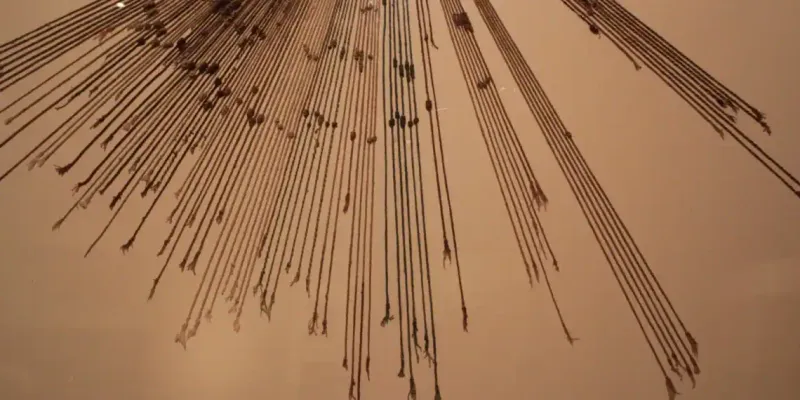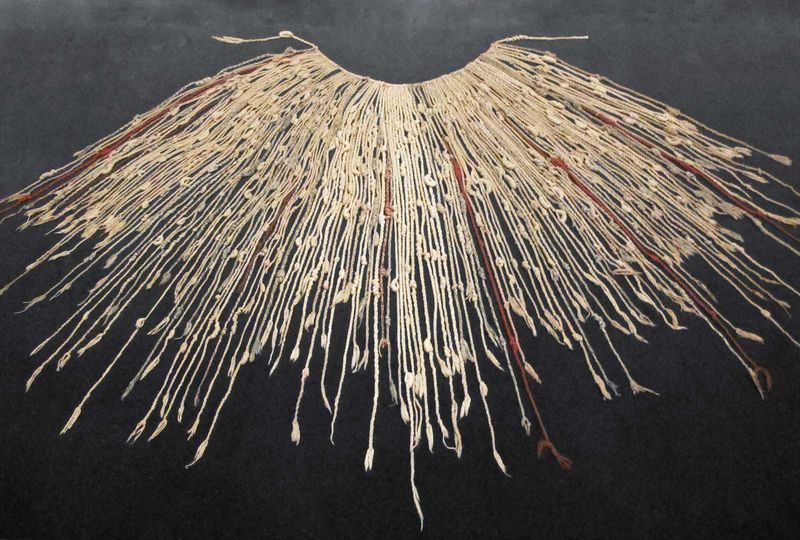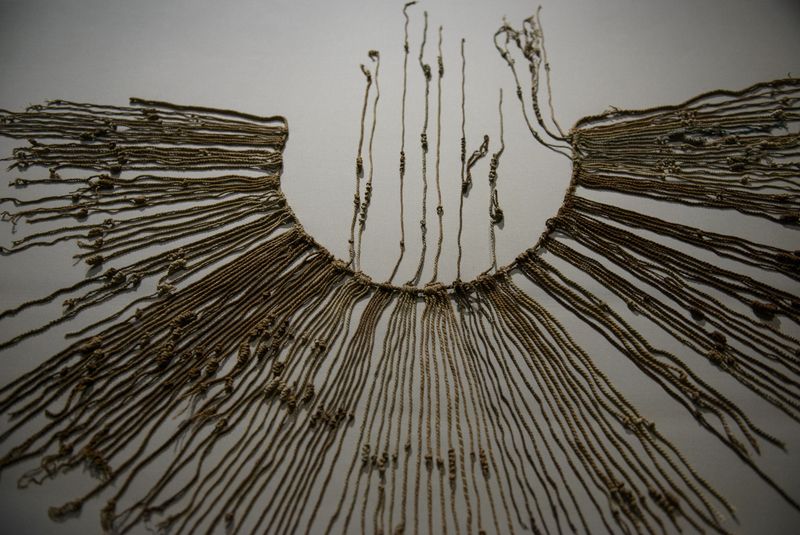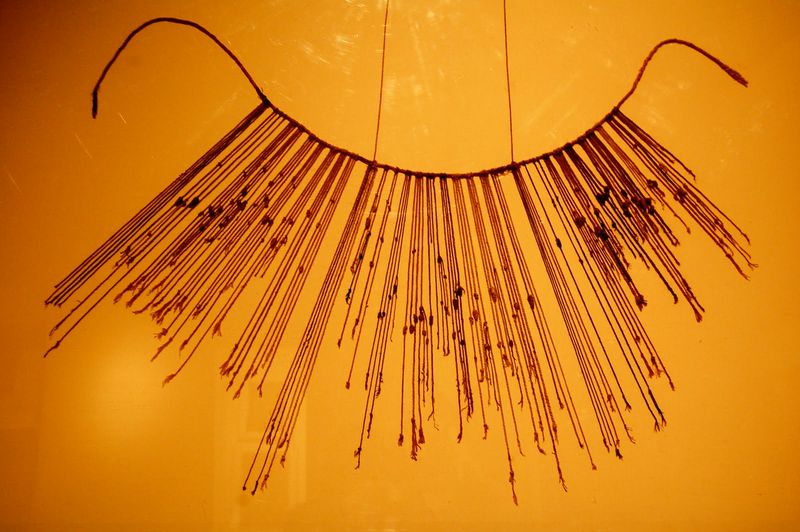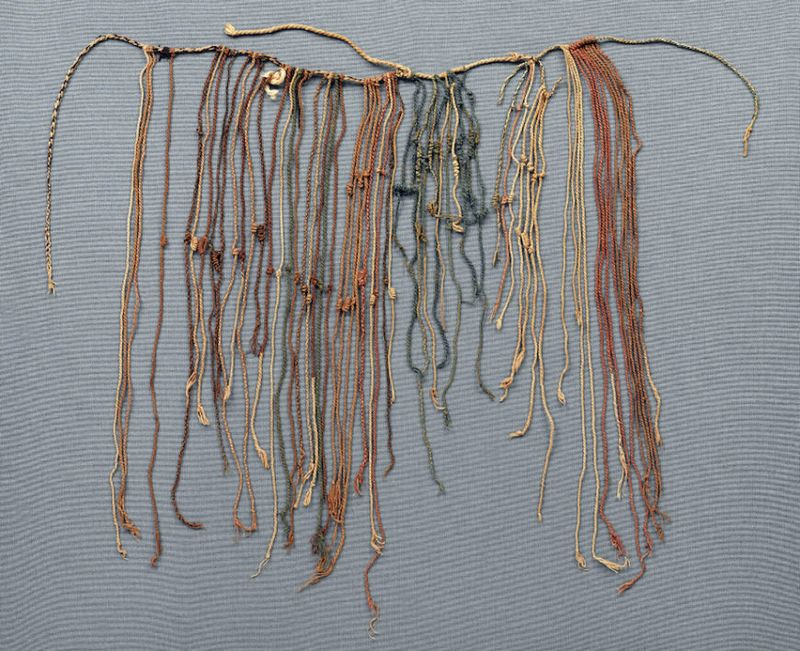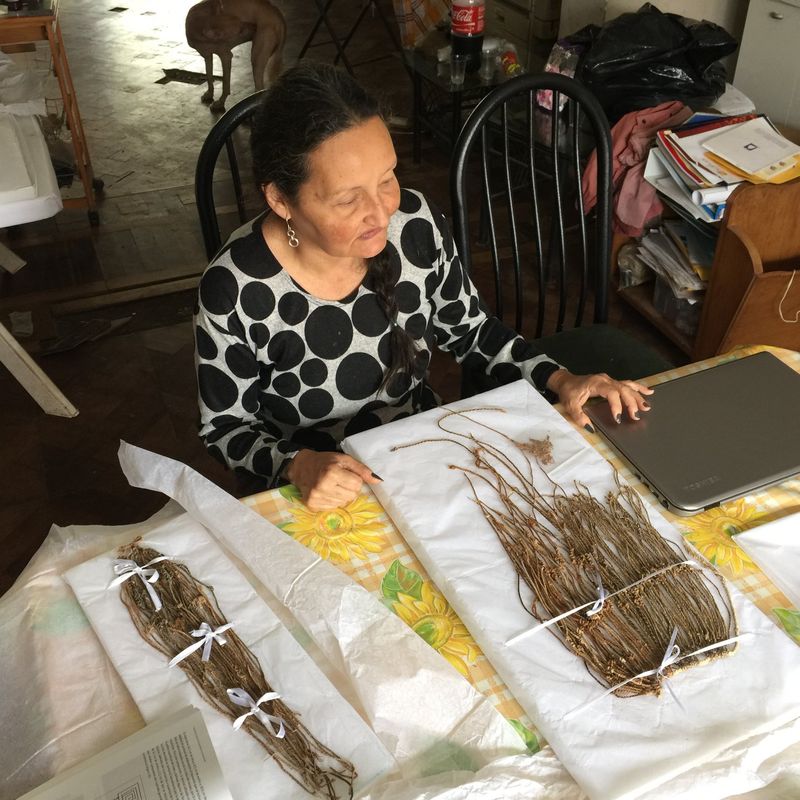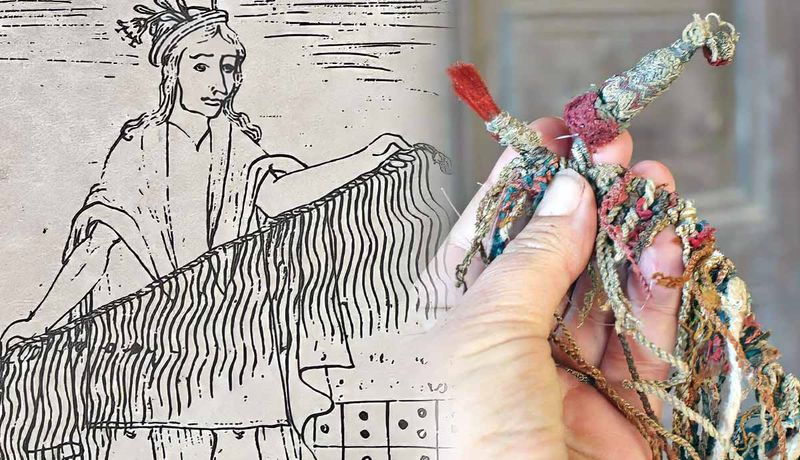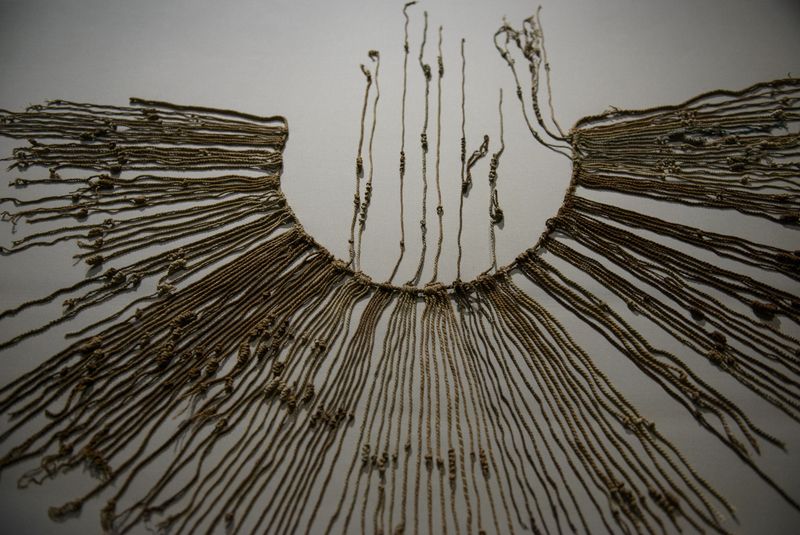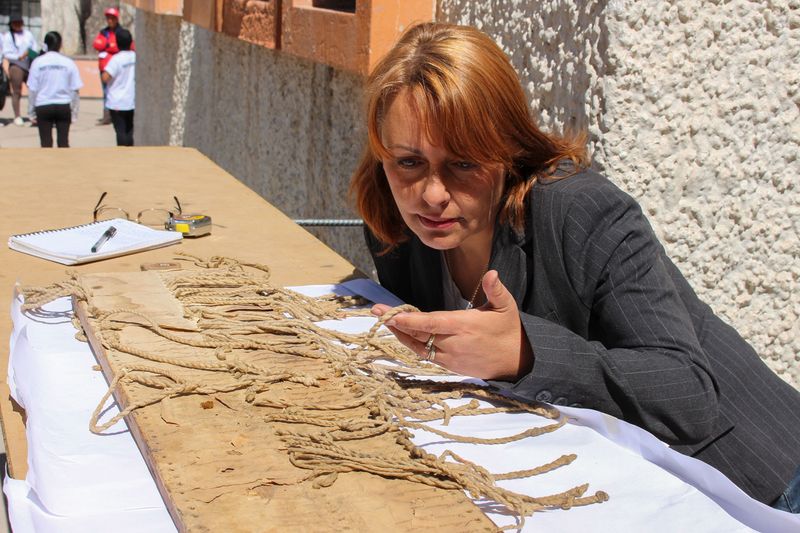Hidden for centuries, the mysterious knotted cords of the Inca Empire called khipus have finally begun to reveal their secrets. These ancient recording devices used patterns of knots to store information, but their exact meanings remained elusive to modern researchers until now.
A breakthrough team of archaeologists and linguistic experts has recently decoded 15 significant khipus, offering unprecedented insights into how the Inca civilization functioned without a written language.
1. Village Census Records Revealed
Researchers uncovered a khipu containing detailed population data from an entire Andean community. The intricate knots tracked residents by age, gender, and occupation—even noting which families specialized in pottery, weaving, or farming.
This discovery proves the Inca maintained sophisticated demographic records without paper or writing. Most fascinating was how they used different cord colors to distinguish between social classes and marital status.
The level of detail suggests administrators could quickly calculate available workforce and plan community projects with remarkable precision, challenging our assumptions about what’s possible in a non-written record-keeping system.
2. Tax Payment Tracking System
Among the decoded treasures was a khipu that functioned as a sophisticated tax ledger. The cords meticulously documented contributions from different households—quinoa measured in precise quantities, woven textiles counted by type, and maize recorded by variety and amount.
Each knot placement indicated when payments were made, while cord colors identified which village official collected the goods. Some sections even showed tax forgiveness during drought years!
This elaborate accounting system reveals how the Inca maintained their redistributive economy across vast territories without written numbers, allowing them to feed armies and support specialized craftspeople throughout their empire.
3. Military Rosters Decoded
A remarkably preserved khipu from a military outpost has finally yielded its secrets. The cord arrangement listed warrior contingents by region, with knots indicating troop numbers and specialized positions like slingers or scouts.
Color-coded strands tracked casualties, reinforcements, and supply allocations. Researchers were stunned to find small subsidiary cords that appear to name individual commanders—the first evidence that khipus could record personal identities.
This military record demonstrates how efficiently the Inca coordinated their forces across mountainous terrain without written orders. The precision suggests their empire’s expansion wasn’t just due to superior numbers but highly organized logistics.
4. Noble Marriage Alliances
Royal historians nearly jumped from their seats when this particular khipu revealed itself as a marriage registry between noble families. The primary cord represented the royal lineage, while attached secondary cords showed marriages to other powerful families throughout the empire.
Knot patterns indicated dowry exchanges and which regional territories became linked through these unions. The most surprising aspect was how certain knot clusters appeared to indicate whether the match was politically strategic or based on divination readings.
This marriage record offers rare insights into how the Inca elite maintained control through carefully orchestrated family connections, essentially creating a map of political alliances spanning generations.
5. Agricultural Calendar Cycles
Farmers would have treasured this khipu as it mapped out an entire agricultural year with astonishing precision. Sequences of knots tracked optimal planting times for different crops based on altitude, with separate sections for potato varieties, maize, and quinoa.
The cord’s pattern changed color at points corresponding to seasonal shifts, while special markers indicated when to perform rituals for rain or abundant harvests. Researchers were amazed to find micro-adjustments for different valley microclimates.
This agricultural khipu demonstrates how the Inca mastered farming in challenging mountain environments through careful observation and record-keeping, allowing them to feed millions despite the extreme elevation changes of their territory.
6. Drought Disaster Documentation
When severe drought struck an Inca province, khipu keepers meticulously documented the unfolding crisis. This recently decoded cord set reveals how administrators tracked rainfall patterns, reservoir levels, and subsequent food shortages across multiple settlements.
The knots show increasing emergency rations being distributed from imperial storehouses as the situation worsened. Most remarkable are the final sections recording population movements as people relocated to areas with better water access.
This disaster khipu provides evidence that the empire maintained sophisticated emergency response systems, collecting environmental data and using it to manage resources during crises—an early form of climate monitoring that helped the civilization survive periodic environmental challenges.
7. Provincial Tribute Collection
The empire’s tax collectors relied on khipus like this one to track tribute from conquered territories. Each primary cord represented a different province, with subsidiary strings showing specific goods demanded—from gold and silver to exotic feathers and medicinal plants.
Knot clusters indicated quotas versus actual payments, with special markers for regions that exceeded expectations. The khipu even contained a section showing how tribute amounts changed based on a region’s harvest quality that year.
This sophisticated accounting system reveals how the Inca maintained control over diverse territories without a written language. By tracking contributions precisely, imperial administrators could identify loyal provinces and detect potential rebellion through payment patterns.
8. Road System Checkpoint Logs
The legendary Inca road network comes alive in this khipu mapping the empire’s highway system. The main cord represents the royal road, with knots marking distances between tambos (rest stations) where travelers could find food and shelter.
Side cords indicate branch routes with their own checkpoint systems. Each station’s section contains information about local resources, nearby settlements, and elevation changes travelers would encounter.
Most fascinating are the special markers indicating where messengers could obtain fresh runners to relay important communications. This road khipu demonstrates how the Inca maintained control over their vast territory through infrastructure management, creating an information network that allowed messages to travel over 150 miles per day.
9. Granary Inventory Records
Food security was paramount in the Inca Empire, as revealed by this khipu documenting contents of a qollqa (storage facility). The meticulously knotted cords tracked quantities of freeze-dried potatoes, corn varieties, and preserved meats—all organized by production date and storage location.
Special markers indicated which supplies were reserved for religious ceremonies versus everyday consumption. Researchers were surprised to find sections showing regular inventory checks and rotation schedules to prevent spoilage.
The level of detail in this storage khipu explains how the Inca maintained food reserves sufficient to withstand multiple years of crop failure. Their sophisticated inventory management system supported both military campaigns and civilian populations through harsh Andean winters.
10. Sacred Festival Calendars
Priests would have consulted this ceremonial khipu to track the empire’s spiritual obligations throughout the year. The cord arrangement maps out major festivals like Inti Raymi (sun celebration) and Capac Raymi (coming of age ceremonies), with knots indicating required offerings and ritual preparations.
Color patterns align with astronomical events—solstices, equinoxes, and lunar phases. Smaller attached cords specify which communities were responsible for providing specific ceremonial items.
This religious calendar reveals how thoroughly the Inca integrated spiritual practices with administrative functions. By documenting ceremonial requirements, imperial authorities ensured religious obligations were fulfilled across their vast territory, maintaining cosmic harmony according to their worldview.
11. Labor Draft Assignments
The mit’a labor system springs to life in this recently decoded khipu. The cords track which communities owed work service to the empire, rotating through construction projects, agricultural labor, and mining operations.
Each knot cluster indicates how many workers were required, for how long, and what skills they needed to bring. The color patterns show remarkable fairness in distribution—ensuring no single village bore too heavy a burden.
Most surprising were markers indicating exemptions for specialized craftspeople and accommodations for communities recovering from natural disasters. This labor khipu demonstrates how the Inca managed to build monumental architecture and extensive terracing through organized workforce management rather than slave labor.
12. Legal Dispute Resolutions
Justice in the Inca Empire had its own recording system, as revealed by this legal khipu. The cord patterns document land boundary disputes, theft cases, and family conflicts that were brought before local authorities.
Each case section contains knots representing the parties involved, the nature of the dispute, and the judgment rendered. Researchers were fascinated to find patterns suggesting standard punishments for similar offenses across different regions.
The most significant aspect was how the khipu tracked compliance with judgments over time, with markers indicating when restitution was completed. This legal record suggests the Inca maintained a surprisingly standardized justice system despite lacking written laws.
13. Royal Family Bloodlines
Genealogy was crucial to Inca succession, as evidenced by this remarkable khipu tracking royal lineages. The main cord represents the founding emperor, with branching lines showing descendants through multiple generations.
Color combinations indicate marriages between royal houses, while special knots mark individuals who became rulers. Subsidiary cords document which ancestral mummies were maintained and worshipped by which living descendants.
This dynastic record challenges previous understandings of Inca succession, revealing that bloodline was more complex than simple father-to-son inheritance. The khipu shows how carefully the Inca preserved their ancestral connections, treating genealogy as both political documentation and sacred knowledge.
14. Coastal Trade Expedition Logs
Maritime commerce wasn’t expected in Inca records, making this coastal trade khipu particularly groundbreaking. The cord sequence documents expeditions to trading partners along the Pacific coast, with knots recording exchanges of highland goods for marine resources.
Different sections track quantities of traded items—colorful feathers, seashells, dried fish, and medicinal plants from lowland regions. Special markers indicate which coastal groups were encountered and whether relationships were friendly or tense.
This trading record reshapes our understanding of Inca economic networks, revealing they maintained sophisticated commercial relationships beyond their territorial boundaries. The precision in recording exotic goods suggests they valued these connections for both practical resources and prestige items.
15. Astronomical Observation Journal
The heavens themselves were mapped in this celestial khipu used by Inca astronomers. The cord arrangement tracks the movements of key stars and planets throughout the year, with special emphasis on the Pleiades constellation that signaled planting seasons.
Knot sequences record solar and lunar eclipses with remarkable accuracy. Researchers were astonished to find sections that appear to predict future astronomical events based on observed cycles.
This star-tracking khipu demonstrates how the Inca integrated practical astronomy with religious cosmology. By documenting celestial patterns, they could time agricultural activities, plan religious ceremonies, and maintain what they believed was cosmic harmony—all without written astronomical tables.
